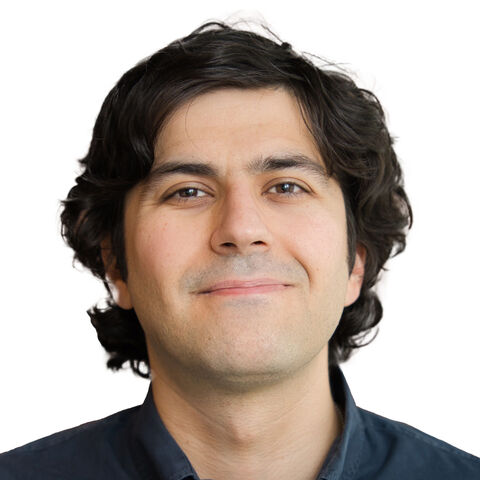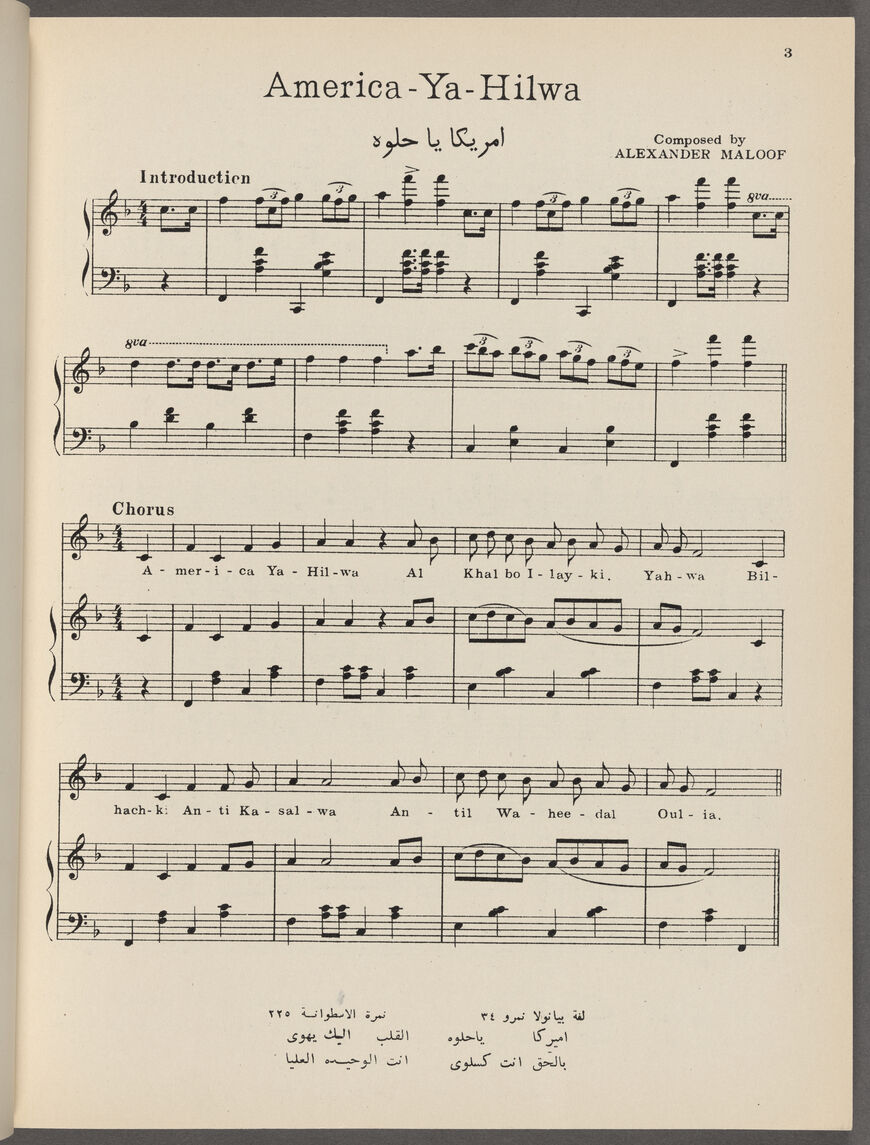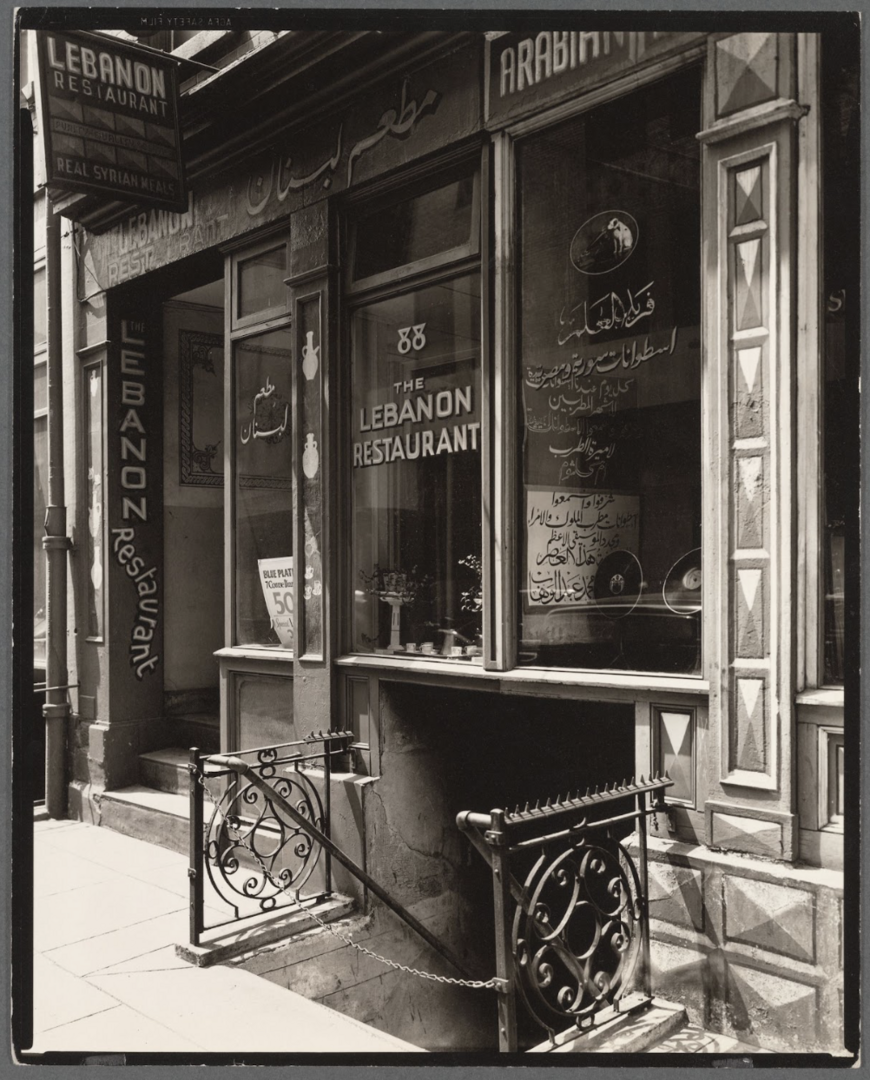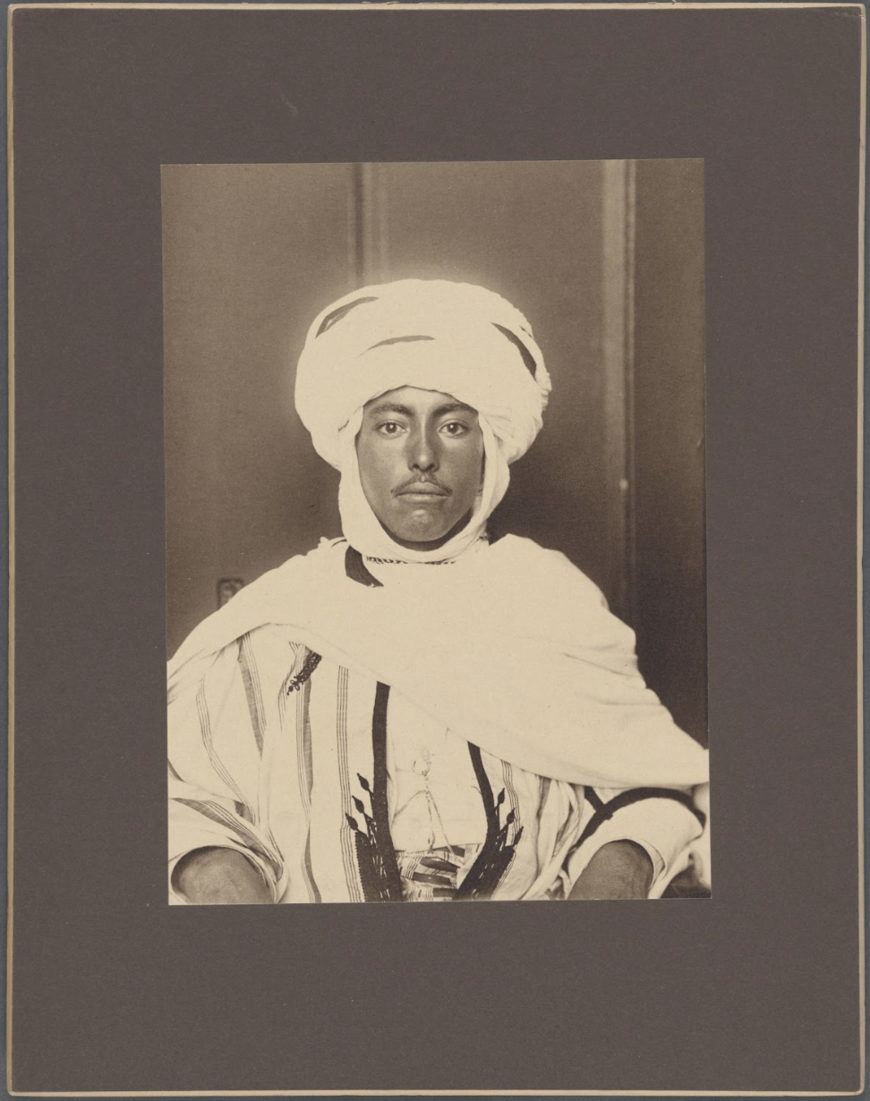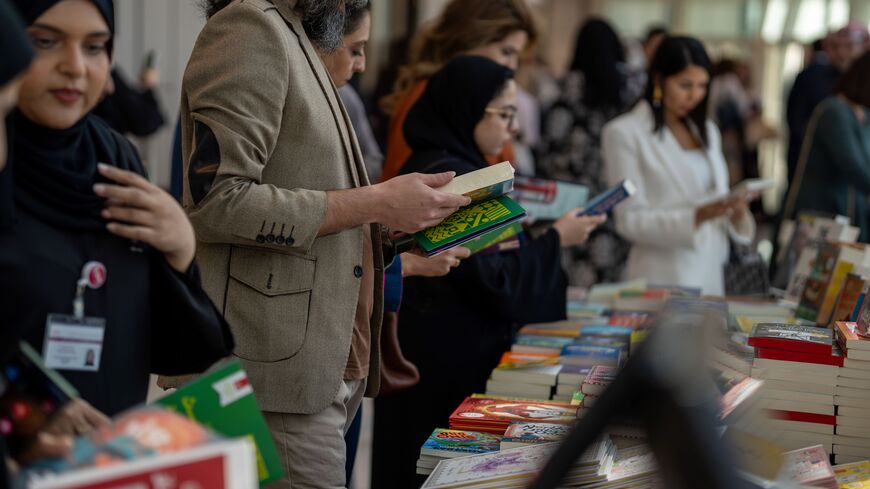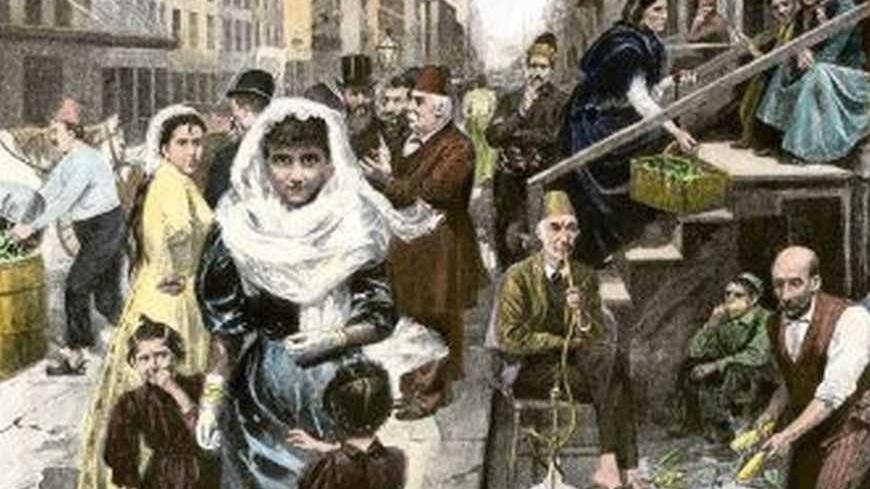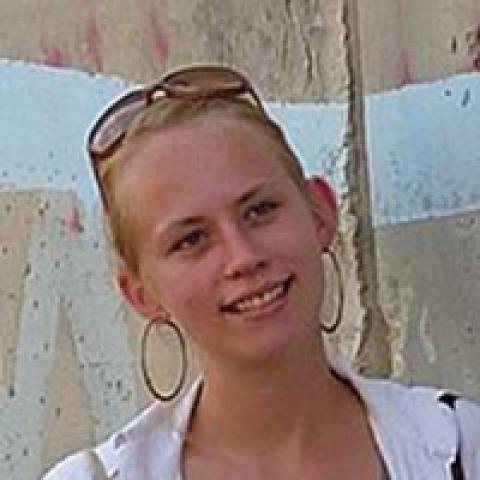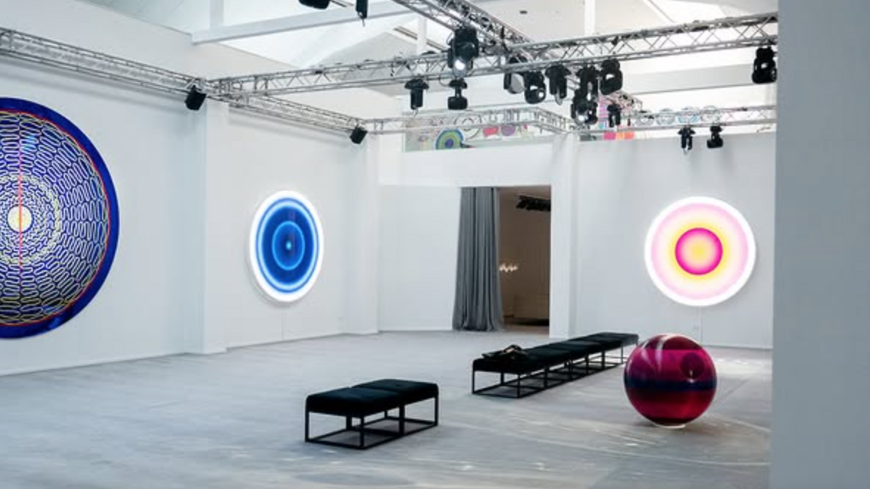New York Public Library showcases history of MENA immigration to city
“Niyu Yurk: Middle Eastern and North African Lives in the City” features photographs, literature and musical recordings dating back more than 100 years.
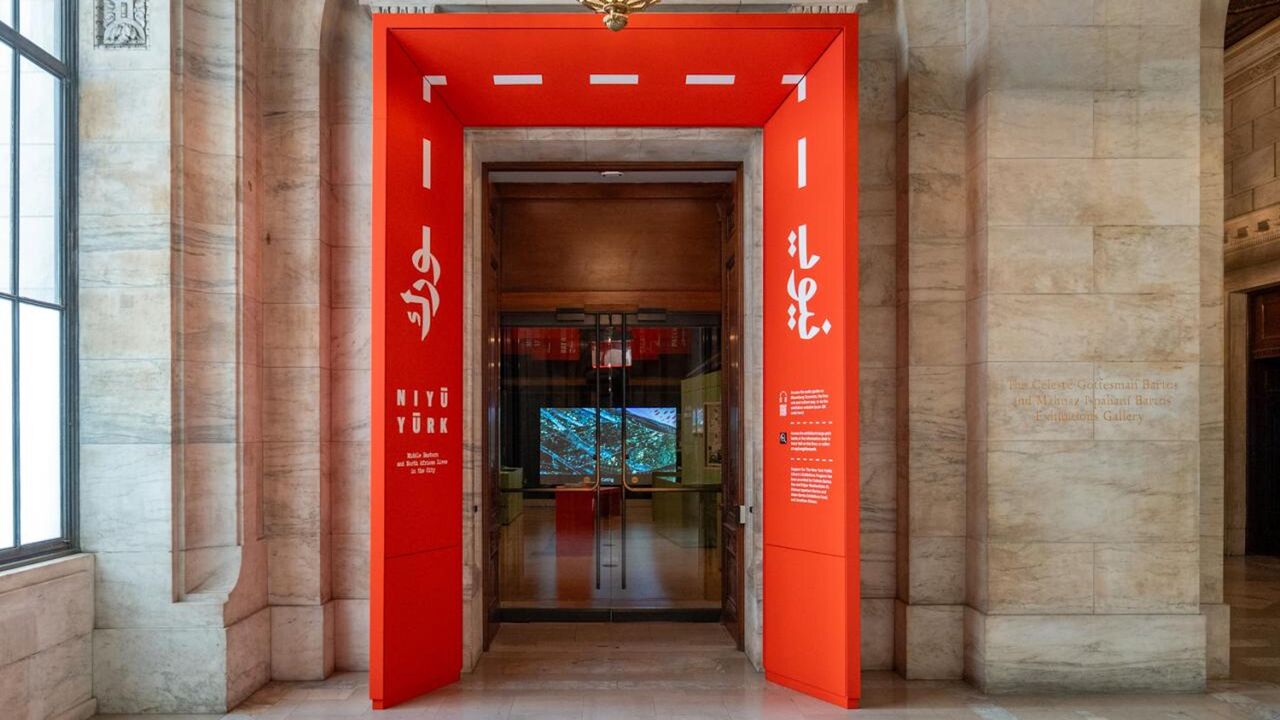
NEW YORK — An exhibit at a New York City library showcases the lives of Middle Eastern and North African immigrants in the city, highlighting both early waves of migration in the 19th century and modern communities.
“Niyu Yurk: Middle Eastern and North African Lives in the City” opened at the New York Public Library on Oct. 4. It features newspapers, photographs, music recordings and other works that showcase the history of immigrants from the region.
Tucked into a corner on the first floor of the library, the exhibit feels like a time portal. To the left, you can hear early 20th century recordings of musicians from Turkey and the Levant playing oud, qanun and other instruments at New York City studios, a legacy of producers seeking “exotic” sounds.
The sheet music for the Lebanese American composer Alexander Maloof's "America Ya Hilwa" (America, oh sweet one), 1912. Courtesy of the New York Public Library.
Step further in, and you’ll find a guide complete with the history of some of Queens’ most important community landmarks, including Little Morocco, a restaurant known for its Friday couscous special, and Islam Clothing, the first Islamic clothing store serving the North African community in the borough.
Other highlights of the exhibition include:
- a copy of “The Book of Khalid” by Ameen Rihani, the first Arab-American novel ever published
- recordings of Egyptian avant-garde musician Halim el-Dabh
- community newspapers serving the Armenian community in the early 20th century
- Arabic-language textbooks on passing the US citizenship test
- photos of early 20th century immigrants including Yemenite Jews, Algerians and Turks in traditional garb
The Lebanon Restaurant in Lower Manhattan in the early 20th century. Courtesy of the New York Public Library.
Middle Eastern immigration to New York City, largely from the Levant and Turkey, began to accelerate in the late 19th and early 20th centuries. Later waves included Egyptians, Moroccans, Yemenis and Palestinians. There are an estimated 160,000 Arab Americans in the city spread across the five boroughs, according to the Arab America website. In New York state as a whole, there are more than 34,000 Turkish people, per World Population Review.
Immigration from Iran accelerated after the 1979 Islamic Revolution. There are roughly 7,000 Iranian-born individuals in New York City, per city government statistics, alongside a larger community of people of Iranian descent.
Mohamed Juda, an Algerian denied entry at Ellis Island in 1910 for allegedly believing in the practice of polygamy. Courtesy of the New York Public Library.
The Middle East and North African community is predominantly Muslim, with smaller populations of Syrian Jews, Maronite Catholics and other minorities. Both the Syrian Jewish and Maronite Catholic communities are concentrated in Brooklyn.
"Niyu Yurk: Middle Eastern and North African Lives in the City" is on display at the New York Public Library through March 8, 2026.
